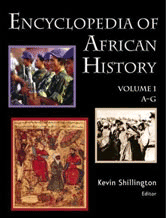Due to cuts to the Indiana State Library budget, as of August 1, access to several databases made available through the INSPIRE program will be significantly altered or unavailable as we seek access through alternative avenues.
 Encyclopedia of African History
Encyclopedia of African History
 A Guide to the Ancient World, H.W. Wilson
A Guide to the Ancient World, H.W. Wilson
 From The Penguin Biographical Dictionary of Women
From The Penguin Biographical Dictionary of Women From Brewer's Dictionary of Phrase and Fable
From Brewer's Dictionary of Phrase and Fable